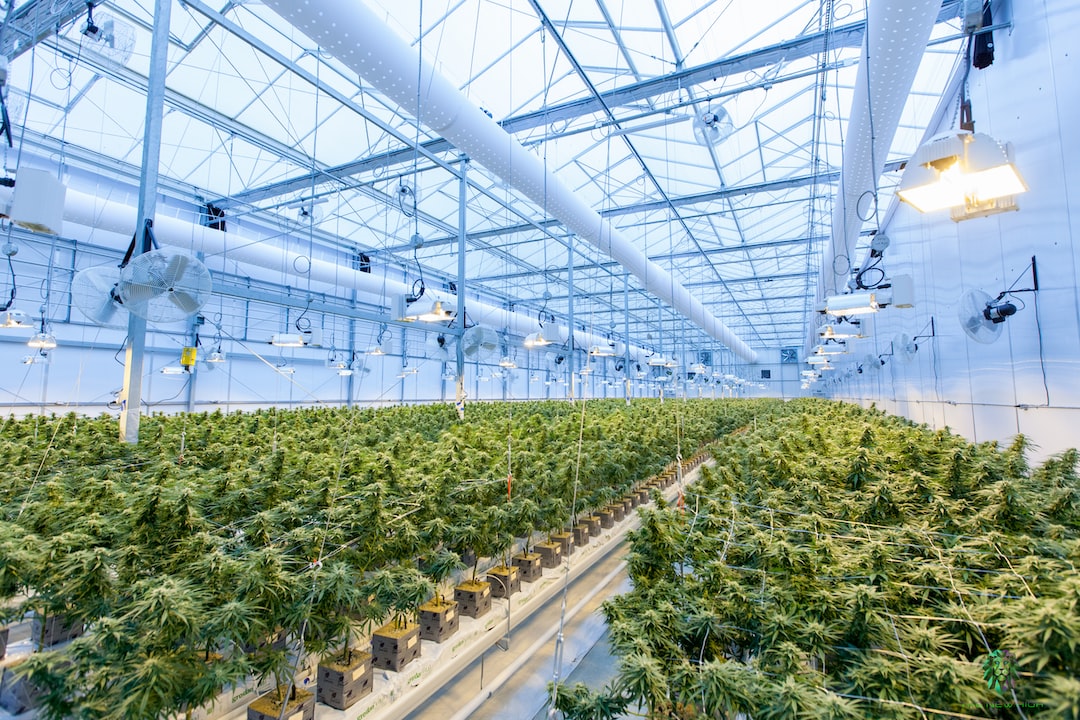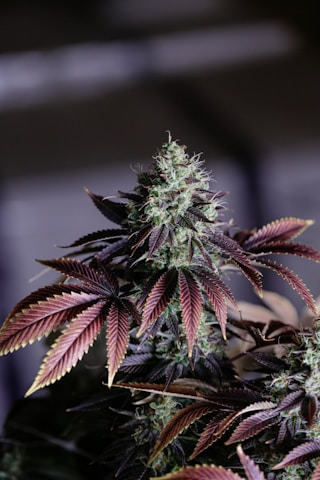
Hey there, fellow cannabis enthusiasts! If you’re looking to grow your own plants, you’ve probably heard about the importance of the vegetative stage. It’s a crucial phase in the cannabis life cycle that sets the stage for strong, healthy, and bountiful plants.
That’s where this guide comes in – we’re here to help you maximize growth during the vegetative stage. With the right knowledge, techniques, and a little bit of love, you’ll be on your way to growing the dankest cannabis plants possible. So let’s dive in and explore the vegetative stage together!
I. Understanding the Cannabis Vegetative Stage
Definition and Role of the Vegetative Stage in the Cannabis Life Cycle
So, what exactly is the vegetative stage? It’s the phase where your cannabis plants focus on growing bigger and stronger – essentially, it’s when they develop their structure. During this time, plants will grow new leaves, branches, and roots, building a solid foundation for the upcoming flowering stage. This is crucial because a strong, healthy vegetative stage can lead to bigger yields and higher quality buds later on. In short, it’s all about laying the groundwork for the rest of the plant’s life cycle.
Duration of the Vegetative Stage and Factors That Influence Its Length
The length of the vegetative stage can vary. It might be as short as 3 weeks or as long as 8 weeks, depending on factors like genetics, environment, and your cultivation techniques. However, there are some general guidelines to help you navigate this stage:
- Indica strains typically have a shorter vegetative stage, ranging from 3 to 4 weeks.
- Sativa strains, on the other hand, can take 4 to 8 weeks to fully develop during the vegetative phase.
- Hybrid strains fall somewhere in between, with a vegetative stage of about 4 to 6 weeks.
Keep in mind that these are just general guidelines – your plants may develop at a different pace, and that’s okay! It’s crucial to pay attention to your plants’ individual needs and adjust your care accordingly. Just remember, the vegetative stage is a vital part of your plant’s life, so make sure to give them the love and attention they deserve.
II. Optimizing the Growing Environment
Ideal Temperature and Humidity Levels for the Vegetative Stage
Creating the perfect environment for your plants during the vegetative stage is key to their growth. Let’s start with temperature and humidity. The ideal temperature range for cannabis plants during this stage is between 70°F and 85°F (21°C to 29°C). As for humidity, aim to keep it between 40% and 60%. Remember, consistency is essential – try to avoid sudden changes in temperature or humidity that could stress your plants.
Read: Managing your cannabis plant temperature
The Importance of Proper Air Circulation and How to Achieve It
Air circulation is another crucial factor for your plants’ well-being. Good airflow helps prevent mold and pests, promotes stronger stems, and ensures your plants receive an adequate supply of carbon dioxide. So, how can you achieve proper air circulation? Here are some tips:
- Use oscillating fans to create a gentle breeze across your plants.
- Make sure your grow room or tent has vents for fresh air intake and exhaust.
- Consider adding a carbon filter to your exhaust system to help control odors.
- Give your plants enough space so that air can flow freely between them.
Using the Right Type of Grow Lights and Setting an Appropriate Light Schedule
Last but not least, let’s talk about lighting. During the vegetative stage, your cannabis plants need lots of light to grow strong and healthy. Here’s what you need to know:
- Choose the right type of grow light for your setup. Common options include High-Intensity Discharge (HID) lights, Light Emitting Diodes (LEDs), and Compact Fluorescent Lights (CFLs). Each type has its pros and cons, so research and choose the best option for your needs.
- Set an appropriate light schedule. During the vegetative stage, cannabis plants typically need 18 to 24 hours of light per day. An 18/6 schedule (18 hours of light, 6 hours of darkness) is a popular choice, but some growers opt for a 24/0 schedule to maximize growth.
- Adjust the height of your grow lights as your plants grow. Ensure the light is close enough to provide sufficient intensity but not so close that it causes heat stress or light burn.
By optimizing your growing environment, you’re setting the stage for a successful vegetative phase and, ultimately, a bountiful harvest.
Read: Guide to LED lights for growing cannabis
III. Feeding Your Cannabis Plants for Maximum Growth
The Importance of Nutrients During the Vegetative Stage
Just like humans, cannabis plants need proper nutrition to grow and thrive. During the vegetative stage, your plants require a balanced diet of essential nutrients to develop strong roots, stems, and leaves. Providing the right mix of nutrients will set the stage for a successful flowering phase and, ultimately, a bountiful harvest.
Recommended Nutrient Ratios for This Stage
There are three primary nutrients that your cannabis plants need during the vegetative stage: Nitrogen (N), Phosphorus (P), and Potassium (K). These macronutrients are often referred to as N-P-K ratios. Here’s a general guideline for nutrient ratios during this stage:
- High nitrogen levels: Nitrogen is essential for the growth of leaves and stems. During the vegetative stage, your plants will need more nitrogen than in other phases of their life cycle.
- Moderate phosphorus levels: Phosphorus is crucial for root development and overall plant health, but it’s less important during the vegetative stage than during flowering.
- Moderate to high potassium levels: Potassium supports the overall growth and well-being of your plants throughout their life cycle, so maintain consistent levels during the vegetative stage.
A typical N-P-K ratio for the vegetative stage might be 3-1-2 or 4-1-3. However, always follow the manufacturer’s recommendations on your chosen nutrient products and adjust as needed for your plants.
Tips on How to Properly Feed Your Cannabis Plants
Now that you know the nutrient ratios your plants need, here are some tips on feeding them effectively:
- Choose a high-quality nutrient product designed for cannabis plants. These products should contain the right balance of macronutrients and micronutrients to support your plants’ growth.
- Monitor the pH level of your nutrient solution. Cannabis plants prefer a slightly acidic environment, with a pH between 6.0 and 6.5 for soil and 5.5 to 6.0 for hydroponic systems.
- Start with a lower nutrient concentration and gradually increase it as your plants grow. This will help prevent nutrient burn and other nutrient-related issues.
- Pay attention to your plants’ appearance and adjust your feeding regimen as needed. Signs of nutrient deficiencies or excesses include yellowing leaves, leaf curling, and stunted growth.
By providing your cannabis plants with the proper nutrition during the vegetative stage, you’ll set them on the path to a successful flowering phase and a bountiful harvest.
IV. Training Techniques for Maximum Growth
An Introduction to Plant Training Techniques and Their Benefits
Plant training techniques are methods of manipulating your cannabis plants’ growth to optimize their potential. By using these techniques, you can increase your plants’ yield, manage their height, and improve light penetration. In short, training your plants during the vegetative stage can lead to a more successful and rewarding harvest.
Overview of Popular Training Techniques for the Vegetative Stage
There are several popular training techniques that can help you make the most of the vegetative stage. Let’s take a look at three of them:
Topping
Topping is the process of cutting the main stem’s top growth tip, encouraging the plant to grow multiple branches instead of a single main cola. This results in a bushier plant with more bud sites and increased yields. Be sure to top your plants early in the vegetative stage, giving them plenty of time to recover and develop new growth.
Low-Stress Training (LST)
Low-Stress Training involves gently bending and tying down your plants’ branches to create an even canopy, maximizing light exposure and encouraging more bud sites. This technique doesn’t involve cutting or damaging the plant, making it a more gentle approach than topping. LST can be done throughout the vegetative stage, adjusting the ties as your plants grow.
Screen of Green (SCROG)
Screen of Green is a training technique that involves using a horizontal screen or mesh to guide your plants’ growth. By weaving the branches through the screen, you create an even canopy that maximizes light exposure and encourages more bud sites. SCROG is particularly useful for growers with limited vertical space, as it helps to control plant height.
Tips on Choosing the Right Training Technique for Your Plants
With several training techniques to choose from, it’s essential to select the one that best suits your plants and growing environment. Here are some tips to help you make the right decision:
- Consider your plants’ genetics. Some strains may respond better to certain training techniques than others.
- Think about your growing space. If you have limited height, techniques like SCROG or LST might be more appropriate.
- Assess your experience level. If you’re new to cannabis cultivation, consider starting with a more straightforward technique like LST before attempting more advanced methods like topping or SCROG.
By choosing the right training technique for your cannabis plants, you can maximize growth during the vegetative stage and set yourself up for a successful harvest.
V. Identifying and Addressing Common Problems
Overview of Common Issues Encountered During the Vegetative Stage
While the vegetative stage is an exciting time for growth, it’s also when your cannabis plants may encounter some challenges. Here are three common issues you might face during this stage:
Nutrient Deficiencies
Your plants may show signs of nutrient deficiencies, such as yellowing leaves, stunted growth, or leaf curling. These issues often result from improper feeding or pH imbalances in the growing medium.
Pests and Diseases
Pests and diseases can wreak havoc on your plants, potentially causing significant damage or even killing them. Common pests include spider mites, aphids, and whiteflies, while diseases like powdery mildew and root rot can also be a threat.
Overwatering/Underwatering
Both overwatering and underwatering can cause problems for your plants. Overwatering can lead to root rot and oxygen deprivation, while underwatering may result in wilting and slow growth.
Tips on How to Prevent and Address These Issues
Now that you’re aware of these common problems, let’s discuss how to prevent and address them:
- For nutrient deficiencies, ensure you’re using the right nutrient ratios and monitor the pH of your growing medium. If you notice signs of a deficiency, adjust your feeding regimen accordingly.
- To prevent pests and diseases, maintain a clean growing environment, ensure proper air circulation, and regularly inspect your plants for signs of infestation. If you spot pests or diseases, take action quickly with the appropriate treatment, such as insecticidal soap or fungicides.
- When it comes to watering, always check the moisture level of your growing medium before watering. This can help you avoid overwatering or underwatering your plants. Develop a consistent watering schedule based on your plants’ needs and adjust as necessary.
By being proactive and attentive to your plants during the vegetative stage, you can minimize common issues and set your cannabis plants up for success.
VI. Transitioning to the Flowering Stage
How to Identify When Your Cannabis Plants Are Ready to Move Into the Flowering Stage
As the vegetative stage comes to an end, it’s time to prepare your plants for the exciting flowering stage. But how do you know when they’re ready? Here are some signs to look for:
- Your plants have reached the desired size and shape. Remember, they will continue to grow during the flowering stage, so don’t wait too long to make the transition.
- If you’re growing photoperiod plants, they may show signs of pre-flowering, such as the appearance of small, white hairs (pistils) on female plants. This indicates that they’re mature enough to flower.
- Your plants have had enough time in the vegetative stage based on their genetics (refer to the guidelines mentioned earlier).
Tips on Preparing Your Plants and Growing Environment for a Smooth Transition
To ensure a smooth transition from the vegetative to the flowering stage, follow these tips:
- Adjust your light schedule. For photoperiod plants, switch to a 12/12 light schedule (12 hours of light, 12 hours of darkness) to induce flowering. For autoflowering plants, they’ll naturally transition without needing a change in light schedule.
- Change your nutrient regimen. Gradually introduce flowering nutrients with lower nitrogen and higher phosphorus levels to support bud development.
- Consider pruning your plants. Remove any dead or yellowing leaves and trim lower branches that won’t receive enough light. This will help redirect energy to the main colas and improve air circulation.
- Keep an eye on your plants’ health during the transition. Watch for signs of stress or nutrient deficiencies and address them promptly.
By carefully transitioning your cannabis plants to the flowering stage, you’ll set them up for a successful and rewarding harvest.
VII. Conclusion
So there you have it, folks! We’ve covered the ins and outs of the cannabis vegetative stage, touching on topics like understanding the vegetative stage, optimizing the growing environment, feeding your plants, using training techniques, and addressing common problems. We’ve also discussed how to transition your plants to the flowering stage smoothly.
Now it’s time for you to apply this knowledge and watch your cannabis plants flourish during the vegetative stage. Remember, a strong and healthy vegetative stage sets the foundation for a bountiful harvest, so be attentive and proactive in your plant care.
As part of our ever-growing community of cannabis enthusiasts, we invite you to share your experiences and tips with others. Together, we can learn, grow, and enjoy the incredible world of cannabis cultivation. Here’s to a successful and rewarding growing journey!







